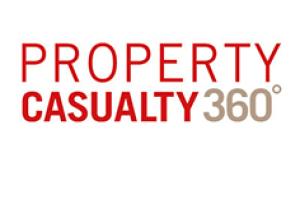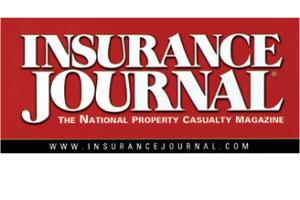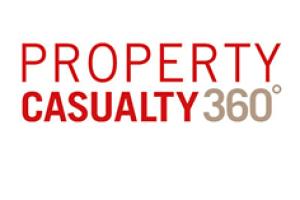Professional liability for today's businesses

As seen in Property Casualty 360
Tens of thousands of small businesses have changed the way they do business, interacting with customers digitally and adjusting their offerings to provide new consulting services, advice, or training.
However, a relatively small proportion of these businesses are making corresponding changes to their insurance programs, leaving the window of opportunity wide open for experienced agents to provide valued counsel and effective insurance solutions to their clients. Increasingly, the key for many agents is to partner with a carrier that can provide responsive professional liability insurance solutions.
Helping customers assess their risks
Whether your client is a wedding planner, a real estate agent, a software developer or a financial consultant, a wide range of small businesses would benefit from coverage beyond what is offered in a standard general liability policy. But many business owners are not aware of their potential coverage gaps — and the costs they could incur if faced with a lawsuit.
Helping small business owners understand their vulnerabilities is a great first step. Professional liability coverage can be especially important if small businesses have customers allege non-performance of their products or services, or withhold payment due to a contract dispute. Additionally, it can be very beneficial for small businesses that encounter any of the following circumstances:
- Performing consulting work, training or other services for their customers.
- Involvement in work requiring special licenses.
- Designing, recommending, installing or testing products.
What to look for in the right carrier
While it is important to make sure clients have the right miscellaneous professional liability protection, we are seeing top agents also assessing the carriers they use to provide this coverage. With an increasing number of small businesses requiring professional liability protection and more and more agents focusing on this opportunity, agents are being very selective about coverage options and carriers, only working with companies they believe have:
| 1. Customer service centers that provide servicing for professional lines business. With many carriers only offering service for standard lines in their customer service centers, it is a good idea to consider if a carrier can manage specialized coverages, as well. Placing professional liability lines in service centers, in addition to standard lines, offers both agents and small business clients the most seamless service experience. | |
| 2. Online solutions. Carriers that have online quoting capabilities, including endorsements that can be packaged with business owner's policies, can offer a seamless solution for clients while improving the ease of doing business for agents. | |
| 3. Experienced underwriters and claims teams. A wide variety of professionals rely on this coverage, so it is not always a one size fits all solution. Partnering with carriers that have experienced underwriters and claims professionals can be an important value-add for agencies, offering expert guidance on nuances of the policies and potential professional services risks for small businesses. | |
| 4. The right coverage options and flexibility. Agents know today's small business could quickly become a big business. Partnering with carriers that offer both endorsement and stand-alone options for professional liability enables agents to offer the level of protection their customers need. Whether a client needs specialized coverages or standard limits, endorsements or standalone options, partnering with the right carriers well positions agents to be able to easily offer long-term solutions for their small business clients as their businesses grow and change. |
Helping small business owners understand the tremendous need for miscellaneous professional liability coverage is a win-win for independent agents. By offering important and valued counsel, agents can guide their clients to protection that helps ensure the continuation and sustainability of their businesses, while reinforcing the agency's value.
Professional liability for today's businesses
As seen in Property Casualty 360
Tens of thousands of small businesses have changed the way they do business, interacting with customers digitally and adjusting their offerings to provide new consulting services, advice, or training.
However, a relatively small proportion of these businesses are making corresponding changes to their insurance programs, leaving the window of opportunity wide open for experienced agents to provide valued counsel and effective insurance solutions to their clients. Increasingly, the key for many agents is to partner with a carrier that can provide responsive professional liability insurance solutions.
Helping customers assess their risks
Whether your client is a wedding planner, a real estate agent, a software developer or a financial consultant, a wide range of small businesses would benefit from coverage beyond what is offered in a standard general liability policy. But many business owners are not aware of their potential coverage gaps — and the costs they could incur if faced with a lawsuit.
Helping small business owners understand their vulnerabilities is a great first step. Professional liability coverage can be especially important if small businesses have customers allege non-performance of their products or services, or withhold payment due to a contract dispute. Additionally, it can be very beneficial for small businesses that encounter any of the following circumstances:
- Performing consulting work, training or other services for their customers.
- Involvement in work requiring special licenses.
- Designing, recommending, installing or testing products.
What to look for in the right carrier
While it is important to make sure clients have the right miscellaneous professional liability protection, we are seeing top agents also assessing the carriers they use to provide this coverage. With an increasing number of small businesses requiring professional liability protection and more and more agents focusing on this opportunity, agents are being very selective about coverage options and carriers, only working with companies they believe have:
| 1. Customer service centers that provide servicing for professional lines business. With many carriers only offering service for standard lines in their customer service centers, it is a good idea to consider if a carrier can manage specialized coverages, as well. Placing professional liability lines in service centers, in addition to standard lines, offers both agents and small business clients the most seamless service experience. | |
| 2. Online solutions. Carriers that have online quoting capabilities, including endorsements that can be packaged with business owner's policies, can offer a seamless solution for clients while improving the ease of doing business for agents. | |
| 3. Experienced underwriters and claims teams. A wide variety of professionals rely on this coverage, so it is not always a one size fits all solution. Partnering with carriers that have experienced underwriters and claims professionals can be an important value-add for agencies, offering expert guidance on nuances of the policies and potential professional services risks for small businesses. | |
| 4. The right coverage options and flexibility. Agents know today's small business could quickly become a big business. Partnering with carriers that offer both endorsement and stand-alone options for professional liability enables agents to offer the level of protection their customers need. Whether a client needs specialized coverages or standard limits, endorsements or standalone options, partnering with the right carriers well positions agents to be able to easily offer long-term solutions for their small business clients as their businesses grow and change. |
Helping small business owners understand the tremendous need for miscellaneous professional liability coverage is a win-win for independent agents. By offering important and valued counsel, agents can guide their clients to protection that helps ensure the continuation and sustainability of their businesses, while reinforcing the agency's value.
Professional liability for today's businesses
As seen in Property Casualty 360
Tens of thousands of small businesses have changed the way they do business, interacting with customers digitally and adjusting their offerings to provide new consulting services, advice, or training.
However, a relatively small proportion of these businesses are making corresponding changes to their insurance programs, leaving the window of opportunity wide open for experienced agents to provide valued counsel and effective insurance solutions to their clients. Increasingly, the key for many agents is to partner with a carrier that can provide responsive professional liability insurance solutions.
Helping customers assess their risks
Whether your client is a wedding planner, a real estate agent, a software developer or a financial consultant, a wide range of small businesses would benefit from coverage beyond what is offered in a standard general liability policy. But many business owners are not aware of their potential coverage gaps — and the costs they could incur if faced with a lawsuit.
Helping small business owners understand their vulnerabilities is a great first step. Professional liability coverage can be especially important if small businesses have customers allege non-performance of their products or services, or withhold payment due to a contract dispute. Additionally, it can be very beneficial for small businesses that encounter any of the following circumstances:
- Performing consulting work, training or other services for their customers.
- Involvement in work requiring special licenses.
- Designing, recommending, installing or testing products.
What to look for in the right carrier
While it is important to make sure clients have the right miscellaneous professional liability protection, we are seeing top agents also assessing the carriers they use to provide this coverage. With an increasing number of small businesses requiring professional liability protection and more and more agents focusing on this opportunity, agents are being very selective about coverage options and carriers, only working with companies they believe have:
| 1. Customer service centers that provide servicing for professional lines business. With many carriers only offering service for standard lines in their customer service centers, it is a good idea to consider if a carrier can manage specialized coverages, as well. Placing professional liability lines in service centers, in addition to standard lines, offers both agents and small business clients the most seamless service experience. | |
| 2. Online solutions. Carriers that have online quoting capabilities, including endorsements that can be packaged with business owner's policies, can offer a seamless solution for clients while improving the ease of doing business for agents. | |
| 3. Experienced underwriters and claims teams. A wide variety of professionals rely on this coverage, so it is not always a one size fits all solution. Partnering with carriers that have experienced underwriters and claims professionals can be an important value-add for agencies, offering expert guidance on nuances of the policies and potential professional services risks for small businesses. | |
| 4. The right coverage options and flexibility. Agents know today's small business could quickly become a big business. Partnering with carriers that offer both endorsement and stand-alone options for professional liability enables agents to offer the level of protection their customers need. Whether a client needs specialized coverages or standard limits, endorsements or standalone options, partnering with the right carriers well positions agents to be able to easily offer long-term solutions for their small business clients as their businesses grow and change. |
Helping small business owners understand the tremendous need for miscellaneous professional liability coverage is a win-win for independent agents. By offering important and valued counsel, agents can guide their clients to protection that helps ensure the continuation and sustainability of their businesses, while reinforcing the agency's value.
Professional liability for today's businesses
As seen in Property Casualty 360
Tens of thousands of small businesses have changed the way they do business, interacting with customers digitally and adjusting their offerings to provide new consulting services, advice, or training.
However, a relatively small proportion of these businesses are making corresponding changes to their insurance programs, leaving the window of opportunity wide open for experienced agents to provide valued counsel and effective insurance solutions to their clients. Increasingly, the key for many agents is to partner with a carrier that can provide responsive professional liability insurance solutions.
Helping customers assess their risks
Whether your client is a wedding planner, a real estate agent, a software developer or a financial consultant, a wide range of small businesses would benefit from coverage beyond what is offered in a standard general liability policy. But many business owners are not aware of their potential coverage gaps — and the costs they could incur if faced with a lawsuit.
Helping small business owners understand their vulnerabilities is a great first step. Professional liability coverage can be especially important if small businesses have customers allege non-performance of their products or services, or withhold payment due to a contract dispute. Additionally, it can be very beneficial for small businesses that encounter any of the following circumstances:
- Performing consulting work, training or other services for their customers.
- Involvement in work requiring special licenses.
- Designing, recommending, installing or testing products.
What to look for in the right carrier
While it is important to make sure clients have the right miscellaneous professional liability protection, we are seeing top agents also assessing the carriers they use to provide this coverage. With an increasing number of small businesses requiring professional liability protection and more and more agents focusing on this opportunity, agents are being very selective about coverage options and carriers, only working with companies they believe have:
| 1. Customer service centers that provide servicing for professional lines business. With many carriers only offering service for standard lines in their customer service centers, it is a good idea to consider if a carrier can manage specialized coverages, as well. Placing professional liability lines in service centers, in addition to standard lines, offers both agents and small business clients the most seamless service experience. | |
| 2. Online solutions. Carriers that have online quoting capabilities, including endorsements that can be packaged with business owner's policies, can offer a seamless solution for clients while improving the ease of doing business for agents. | |
| 3. Experienced underwriters and claims teams. A wide variety of professionals rely on this coverage, so it is not always a one size fits all solution. Partnering with carriers that have experienced underwriters and claims professionals can be an important value-add for agencies, offering expert guidance on nuances of the policies and potential professional services risks for small businesses. | |
| 4. The right coverage options and flexibility. Agents know today's small business could quickly become a big business. Partnering with carriers that offer both endorsement and stand-alone options for professional liability enables agents to offer the level of protection their customers need. Whether a client needs specialized coverages or standard limits, endorsements or standalone options, partnering with the right carriers well positions agents to be able to easily offer long-term solutions for their small business clients as their businesses grow and change. |
Helping small business owners understand the tremendous need for miscellaneous professional liability coverage is a win-win for independent agents. By offering important and valued counsel, agents can guide their clients to protection that helps ensure the continuation and sustainability of their businesses, while reinforcing the agency's value.












